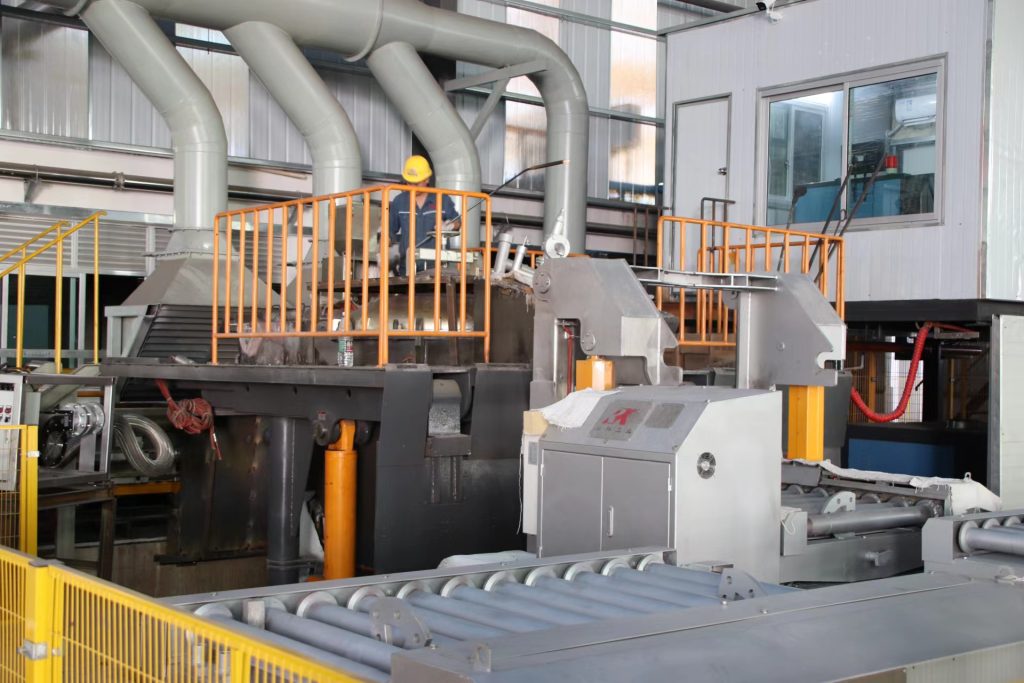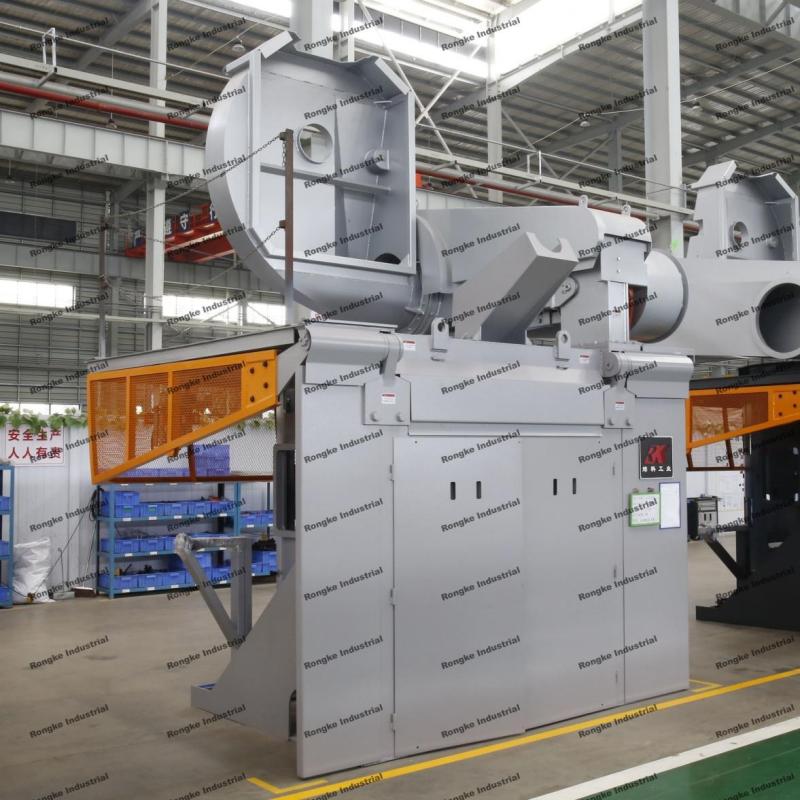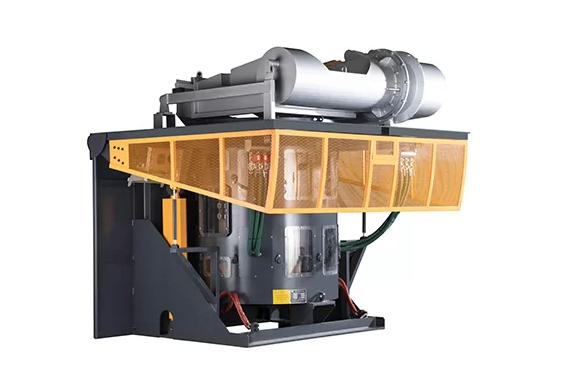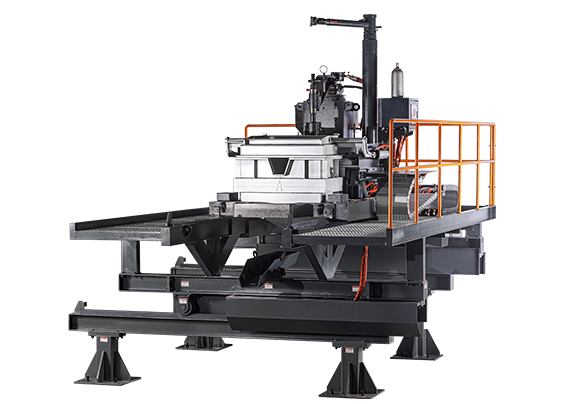Choosing the Right Heat Treatment Furnace for Your Industry Needs
Understanding the Heat Treatment Furnace
Where advanced metal processing is concerned, the heat treatment furnace is certainly one of the tools most widely used in the field. This specific equipment is very crucial in improving the characteristics of metal materials to increase their ability and suitability for use. This is because, in this article, we focus on the world of heat furnaces; we discuss its types, processes, and importance in different industries This article on heat treatment furnace will be informative, easy to understand and enjoyable to read.
What is a Heat Treatment Furnace?
At its core, a heat treatment furnace is an industrial oven designed to heat metals to specific temperatures and then cool them in a controlled manner. This process alters the physical and sometimes chemical properties of the metal, improving its strength, toughness, and resistance to wear.
Why Heat Treatment Matters?
Heat treatment processes are crucial in industries such as automotive, aerospace, manufacturing, and metalworking. By employing heat treatment, manufacturers can:
• Enhance metal performance
• Extend the lifespan of components
• Improve resistance to stress and fatigue
Given the nature of the benefits that it offered above, it was not surprising to see that such furnace is popularly adopted across different industries.
Why Heat Treatment Processes?
All the heat treatment processes are in fact different and every one of them has its own benefits that are good for certain applications and use. Understanding these can help manufacturers choose the right method for their specific needs:
Annealing and its Benefits
Annealing also relieves hardness, improves ductility and also improves machinability. This process is most effective in metalworking industries as will be seen from the following discussion.

The Quenching Process
Quenching in general results in increased hardness and strength but may include brittleness in them. Furthermore, it is crucial to balance this process with subsequent tempering.
Carburizing and Nitriding
Both processes are ideal and important in applications where hard surfaces are desirable, as in gears and automotive tools and die.
Key Considerations for Selecting a Heat Treatment Furnace
When choosing a heat treatment furnace, several factors should be considered:
Type of Metal
Every kind of metal needs a certain kind of heat treatment. This is very important when choosing the right furnace, therefore understanding the material is very important.
Desired Properties
You need to find out what attributes are desirable in the final product. This will help in making decisions on the process to be adopted and more so the type of furnace to be used.
Energy Efficiency
Today’s concern for the environment also makes it more advantageous for homeowners to choose the most energy-efficient models of furnaces.
Furnace Automation
Through automation, heat treatment procedures may be made more accurate and uniform and, hence are suitable for industrial applications.
Installation and Maintenance of Heat Treatment Furnaces
Furnace Installation
Proper installation is therefore crucial to the efficiency of heat treatment operations within a heat treatment furnace. Should be done by professional technicians and skilled staff that will guarantee its proper performance and security.
Furnace Maintenance
Since failure to regular checkups is catastrophic, it is important for the intended cars to undergo regular maintenance. These include temperature control atmosphere setting settings and overall operation check.
Safety Measures in Heat Treatment
It is obvious that operating in any industrial area requires careful adherence to stringent safety measures; here are some key safety measures to consider:
• Temperature Control: Temperature fluctuations should be well monitored to ensure that it does not exceed limits to cause accidents.
• Atmosphere Control: Due to proper atmosphere control, reactions capable of generating dangerous conditions are avoided.
• Personal Protective Equipment (PPE): It is essential that while working, all the employees were proper protective clothing to avoid getting burns among other injuries.
Fully Enclosed Furnace Shell: A Multi-Functional Innovation
The Intermediate Frequency Coreless Induction Furnace is already becoming a brand new kind for metal melting with a new fully enclosed furnace shell. This design feature is not merely one of beauty, but rather, has several important purposes that make a vehicle safer, easier to maintain, and longer lasting vehicle.
Major Roles of the Outer Covering
Contamination Prevention
Another advantage of the fully enclosed shell is that no dust and other interferences get inside the system. In conventional configurations, dust intrusion can be very perilous, including the likelihood of setting the coil on fire and threatening functionality. As a result of this allowed structure, the chances of contamination are greatly reduced meaning better melting processes can be conducted.
Minimisation of Magnetic Emissions
This open-top configuration also serves to protect the coil from the effects of flooding by acting as a second barrier to the field. This relief is very important as it decreases magnetic radiation to a significant low. The Intermediate Frequency Coreless Induction Furnace that is available has been designed to give out only one-tenth of the magnetic radiation output of similar ones on the market. Not only that, it goes beyond the national safety standard, but it also reduces possible health risks to the workers and the neighbourhood considerably.
Enhanced Durability
In addition to safety, the shell design regenerates another important side of the furnace as it is more or less durable in nature due to the built shell. As it protects the internal parts of the systems and products from impacts that cause them to need frequent repair, it minimizes them. This directly leads to an increase in the equipment service life – which is why investments in such equipment would pay off at the steel production facilities.
Cost-Efficiency
Lower maintenance costs, longer equipment life, and fully enclosed housing. These give fully enclosed furnaces another economic advantage. The main advantages of steel production facilities are low operating costs and high efficiency. They are therefore very suitable for a wide range of companies.
The Future of Heat Treatment Furnaces
That means the technology enhancement also increases the world of heat treatment. Innovations such as:
• Smart Furnaces: Including the application of IoT for real-time monitoring and control.
• Energy-Efficient Designs: Shall contain elements such as general emphasis on sustainability as well as energy savers.
• Advanced Materials: Discovery of fresh metals that may be suitable for operations under harsh environments.
These trends indicate that heat treatment technology is about to get even brighter, or in other words. The direction is for heat treatment technology to develop in a way that encourages better processes and better materials.
Conclusion
The heat treatment furnace is an indispensable tool in modern manufacturing and metalworking. Its various types and processes cater to a wide range of industries, ensuring that metal components meet stringent performance standards. For more information about heat treatment furnaces and their applications, visit Rongke. Embrace the future of metal processing with the right heat treatment technology!





